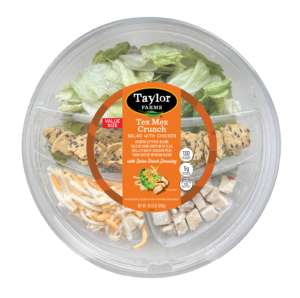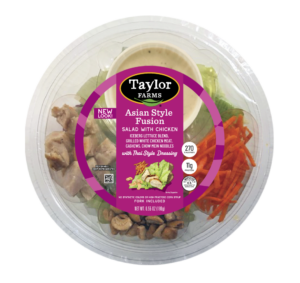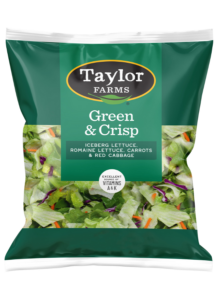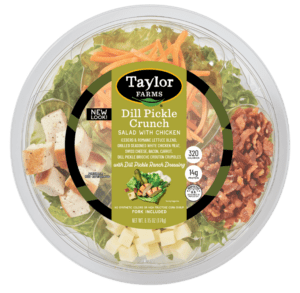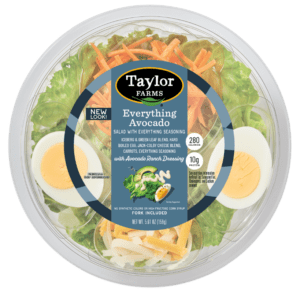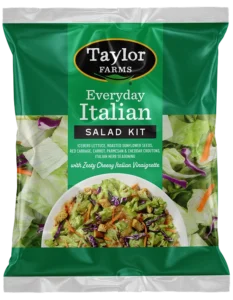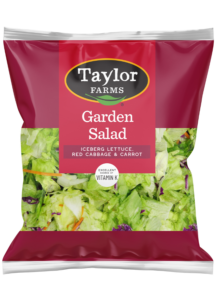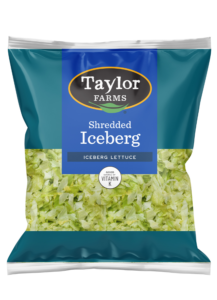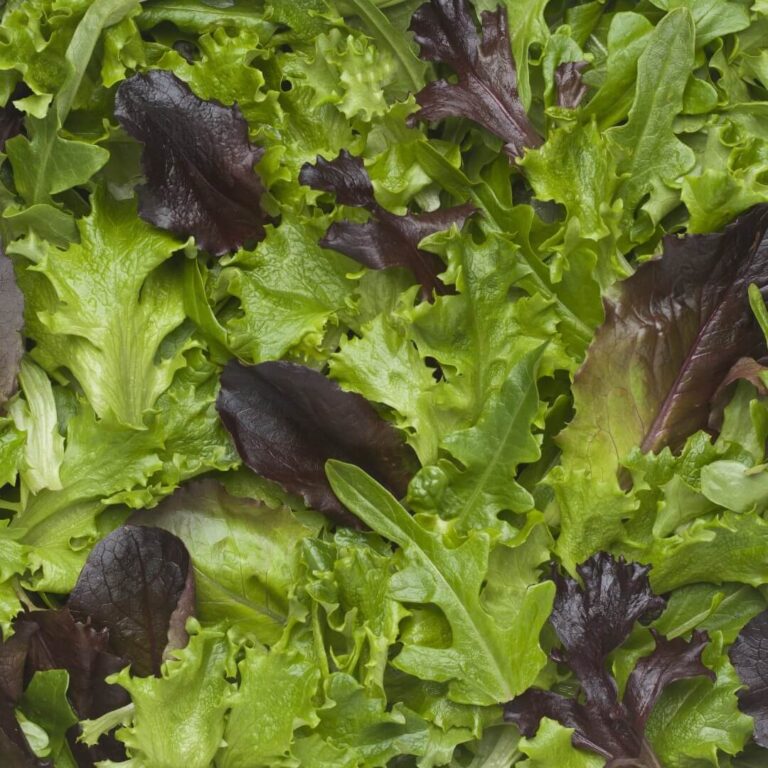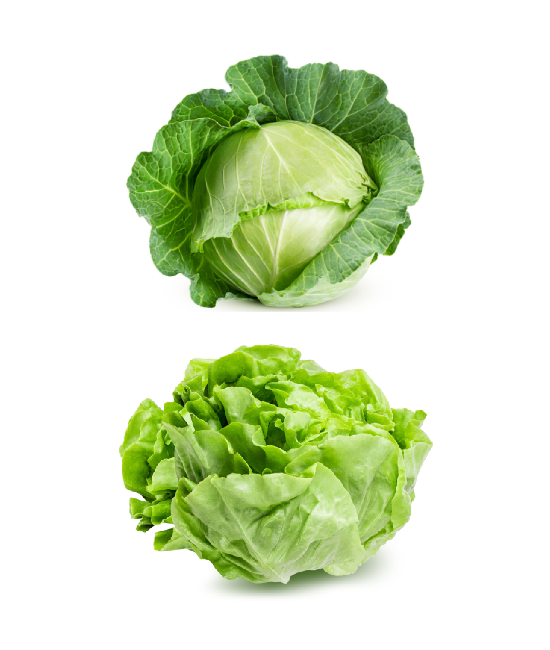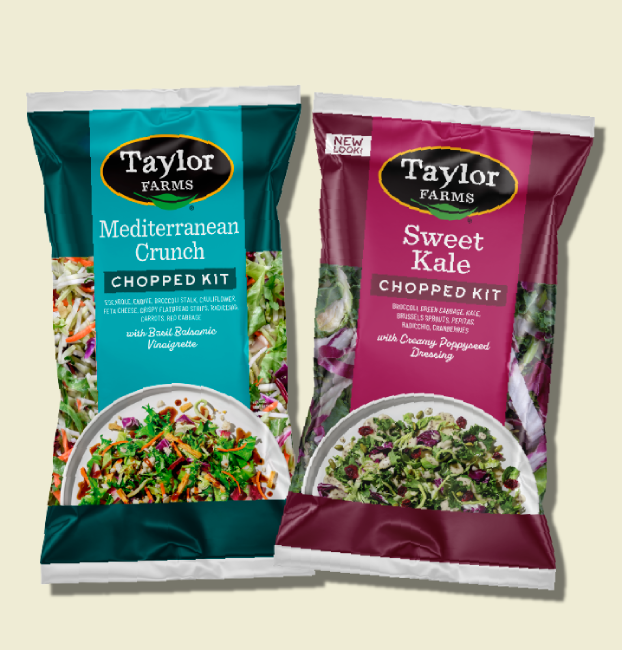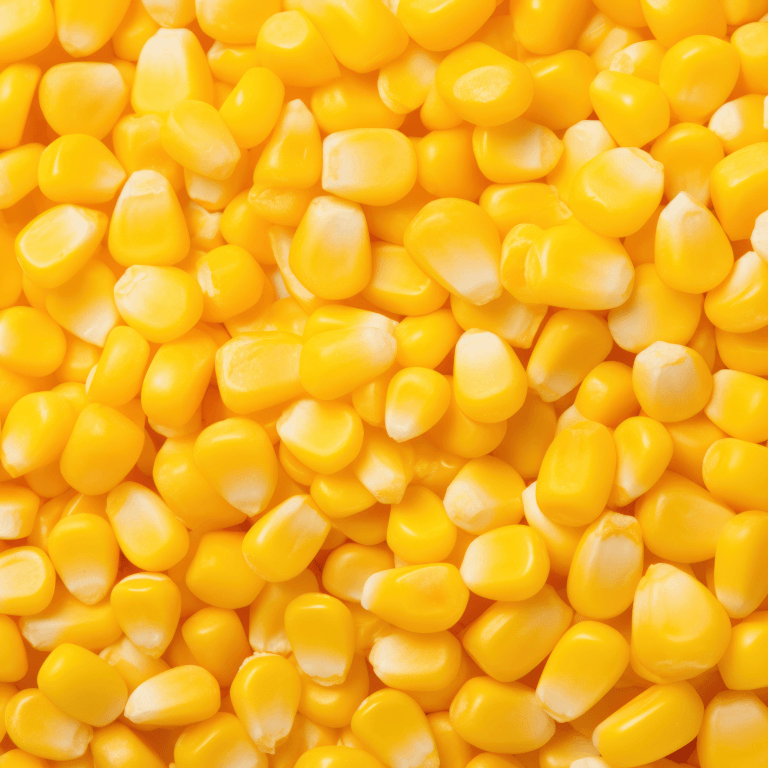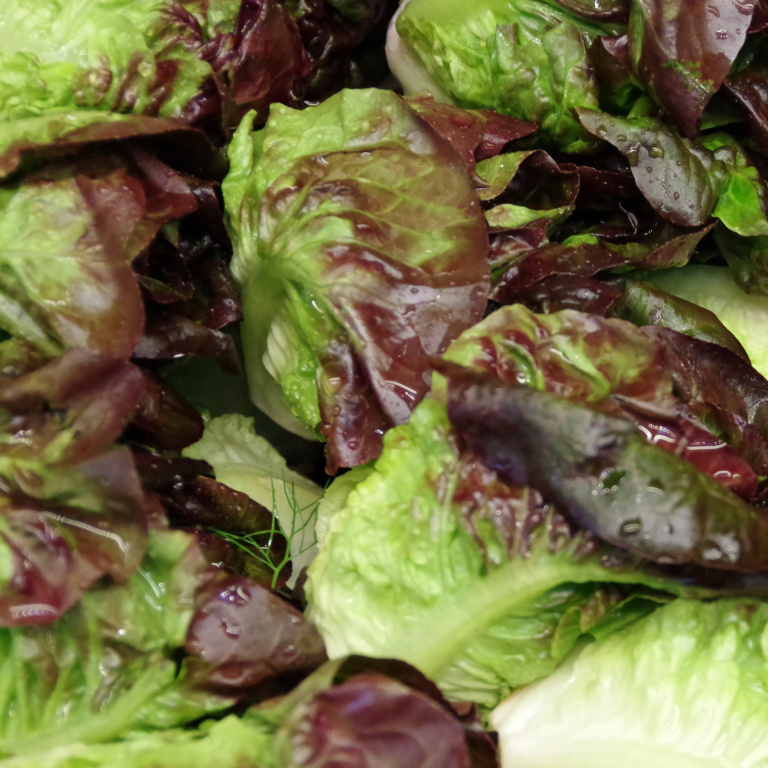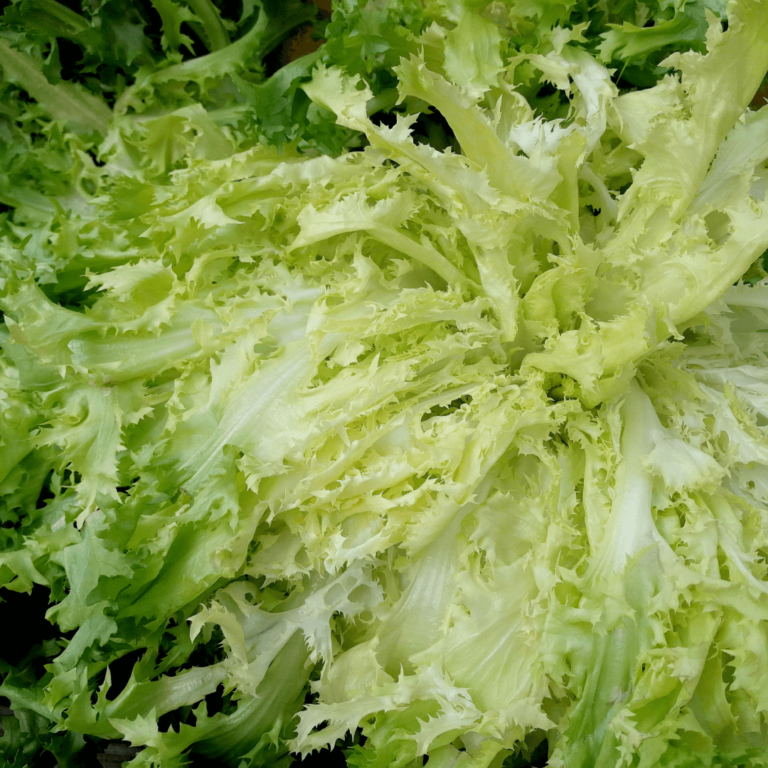Iceberg Lettuce at a Glance

Scientific Name: Lactuca sativa var. capitata
Family: Asteraceae (the aster, daisy, or sunflower family)
In Season: Year-round, with the peak season spanning from May through September.
Varieties: Iceberg lettuce is a variety itself, so there aren’t any further sub-varieties.
Great For adding crisp texture and mild flavor. Iceberg is ideal for salads, particularly the classic wedge salad. It’s also a common choice for sandwiches, wraps, burgers, and as a garnish for various dishes. Plus, its crisp leaves can even serve as a low-carb ‘wrap’ or ‘bun’ substitute.
Iceberg Lettuce Nutrition
10 calories
Vitamin K
Folate
Common Questions about Iceberg Lettuce
Raw iceberg lettuce offers a pleasant crunch that’s unparalleled among leafy greens, which brings a refreshing crispness to every bite. Its taste is mild, slightly sweet, and watery, which makes it a versatile addition to endless types of dishes.
When cooked, iceberg lettuce’s crisp character softens, and it adopts a more subtle, slightly sweeter flavor. Its texture becomes wilted and tender, similar to cooked spinach or other greens. Lightly sautéing or braising iceberg lettuce can pair well with strong flavors like garlic or bacon, but you will lose the trademark crunch.
Flavor: (1-5 “leaves” Mild to Bold)
Texture: (1-5 “leaves” Tender to Crunchy)
Growing iceberg lettuce
Iceberg lettuce is usually ready to harvest when the heads are firm, and the leaves are a light green to whitish color. The heads typically reach about 4-5 inches in diameter. To harvest, simply cut the head off at the base of the plant using a sharp knife. Try to harvest in the morning when the leaves are crisp and still full of moisture.
Purchased iceberg lettuce
When purchasing fresh iceberg lettuce, look for heads that are firm and heavy for their size. The outer leaves should be a vibrant green and free from any discoloration, spots, or blemishes. Avoid heads that have loose or wilted leaves, as this may indicate that the lettuce is past its prime.
Store iceberg lettuce in the refrigerator, ideally in the crisper drawer. If your lettuce didn’t come in a plastic bag, place it in one that is perforated or loosely tied to allow some air circulation. Consider adding a dry paper towel into the bag to absorb any excess moisture, which can lead to rot.
With proper storage, a head of iceberg lettuce can stay fresh in the refrigerator for 1-2 weeks.
Iceberg lettuce is not recommended for freezing. Due to its high water content, freezing iceberg lettuce can significantly alter its texture, turning it mushy when thawed.
Iceberg lettuce prefers cooler weather and can be grown in many parts of the world. It’s a hardy plant that can tolerate frost and even light freezing temperatures. California is the leading producer of iceberg lettuce in the US, while Spain, Italy, and China are among the top producers of lettuce globally.

How to cook & serve iceberg lettuce
Raw iceberg lettuce can be served in salads, sandwiches, and wraps. Simply chop it into slices or wedges, or tear the large leaves into pieces. Rinse and either spin dry or pat dry.
Grilled iceberg lettuce has a smoky, charred flavor. Cut the head into wedges, brush with olive oil, and grill until slightly charred. Drizzle with your favorite dressing and top with crumbled blue cheese or bacon bits.
Sautéed or stir-fried iceberg lettuce has a mellow flavor and slightly wilted texture. Serve it alongside proteins like chicken or tofu, or as a unique side dish.
Iceberg lettuce pairs well with robust dressings. Traditional pairings include tomatoes, cucumbers, and carrots in salads, but don’t be afraid to try it with stronger flavors like blue cheese, bacon, or tangy vinaigrettes!



